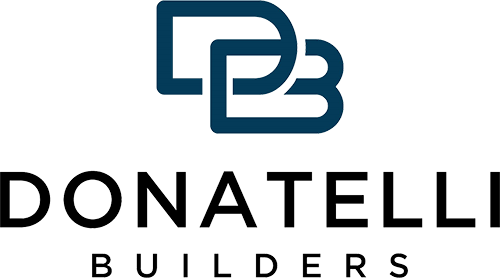As Albert Einstein famously said, the definition of insanity is “doing the same thing over and over again and expecting different results.” Well, nothing has changed more over the last 60 years than communication technology. When Einstein was still with us in 1955, the first pocket transistor radios went on sale. Do you think anyone in his generation — in their wildest imaginations — would ever believe what’s available to us in the way of communication technology now? What I do find very shocking, though, is the fact that we still see general contractors using antiquated methods of communication with their clients over and over again (“insanity”).
If you talk to anyone who has lived through a remodeling project, there is a pretty good chance that they will say they felt like the communication with their general contractor could have been better. Do a quick search online and you will find all kinds of generic advice about what a homeowner can do to improve communications with their contractor.
One such article published in Better Homes and Gardens provides me with some humor, though it’s not meant to. When I read the tip “job-site notebook or dry-erase board” I could not help myself from thinking that this advice was posted back when I was in high school working for
my father on Saturdays for $20. What kind of advice is this? The only thing they left out was sending smoke signals. The problem with articles like this is that they are well-intentioned but
simply do not inform a homeowner who really does want to make sure they hire a contractor who is using technology available in December of 2013 (and not 1983).
In this article, the author makes two statements that I fully agree with:
- Communication will make or break your relationship with your general contractor
- Decide on a method of communication ahead of time
I fully agree that communication will have a huge impact on what I call the owner communications side of project management and what a homeowner might refer to as “how hard or easy the contactor made it to interact on every level.” Today, any contactor who is willing to invest the time can easily deliver a world-class communication portal to their clients if it is a priority to them; so my first piece of advice is as follows.
Ask any contractor you are considering for a project to provide you with a demonstration of how they will handle each and every type of communication related to your project. If they can’t do this in a way that demonstrates to you that they have put some serious thought into this part of their business, simply move on and find another contractor. This is an area where you should not settle, and I will show you in this blog exactly what is available out there and what you can expect.
As I’ve mentioned, in the Better Homes and Gardens article, it suggests that you use a “job-site notebook or a dry-erase board.” This — to me — is almost like saying: “Make sure you bring the sheet music to concert at Orchestra Hall in case the conductor forgets his or hers.” What I mean is that your general contractor should come to the party with a solutions-based focus in mind. The communications management system they use should be based on years of
experience; it is not an issue for the homeowners to figure out and implement.
So what does the best look like? State-of-the-art communications with your general contractor should be 24/7.
The best of what is available today is of course a Web-based application (project portal) that should be available to two homeowners (ex: a husband and wife) 24/7 so all project details can be located in one place. This availability should be set up in the pre-construction/design phase and should continue as a warranty tool in the event you have something that needs to be addressed after the project has been completed. So here it is, a detailed list of features necessary for a project portal to include in order to properly communicate an up-to-the-minute status of your project:
- Overall Schedule: A good system will provide a basic calendar view and may even offer Gantt chart views for those of you with some experience in project management. The minimum here is to have an accessible schedule with at least some basic milestones showing progress. Our system has a great feature that allows us to email or text scheduling notifications/changes to our partners with a push of a button, and they then respond and a little green “thumbs up” shows alongside their task confirming that they agree and will be on site.
- Selections Management (First Image Below): A complete listing of all selections that need to be made by the client, affixed with deadlines and grouped into sub-categories. There should be no surprises when it comes to making selections; they should be clearly spelled out far in advance giving the homeowner reasonable time to make their choices.
- Expense Tracking (Second Image Below): Basic expense tracking is a dashboard of sorts and should allow for quick access to cost implications related to product selections and changes to the scope of work. This feature can also show payments made and details (over/under budget) for each selection made. The goal here is to help you keep track of how your selections affect your budget in real time.
- Conversation Log (Third Image Below): Gone are the days of lost emails or misplaced pieces of paper. Our online customer portal stores every single comment and response the contractor, client and vendors/partners make throughout the course of any project, which allows for complete transparency and accountability.
- Project Files: All floor plans, designs/layouts, product spec sheets, custom cabinet renderings, fixtures, trim work and appliance spec sheets, etc. are stored here. At any time, the team working on your project has access to the very latest information. If a change to the floor plan was made today, we upload it to the portal and delete the old
version immediately so everyone is working from the same plan.
- Project Photos: For busy clients who travel and can’t be on the job site every day, we post updated images so they can check on their project’s progress.
- Warranty List: Once the project has been completed, a good system will allow you continued access in the event you want to make a warranty request, or just check what paint was used on the library walls (ex: access your approved paint schedule) so you can continue to have full access to your project details.
Curious? This is what state-of-the-art communications with your general contractor looks like:



The main idea I’m trying to make is that the onus of communications shouldn’t fall on the shoulders of the homeowners. It is your general contractor who is ultimately responsible for communications to clients, sub-contractors, vendors, design partners and anyone else involved in a new construction or remodeling project. Beware of any general contractors whose communication methods are stuck in the last century (or even the last decade for that matter)!
Since I’ve held your interest to this point, can you spare an additional 114 seconds? Take a look and watch this brief video that highlights the ease and functionality of the great Web-based client portal I’ve addressed in this blog. I showed you some screen shots above; the video is worth a viewing, too:
In the beginning of this blog post, I mentioned the year 1955 (the year of Albert Einstein’s passing). Three other interesting events took place that year: the first McDonald’s was erected, “The Mickey Mouse Club” debuted on American television, and Steve Jobs, the co-founder, chairman and CEO of Apple, Inc., was born. The staggering impact these three corporations (McDonald’s, Disney and Apple) have had and continue to have on our society is due, in part, to their demand for the very best communication possible: from their executives, employees, customers, vendors and anyone else who does business with them. The CEOs of these companies never stop innovating, and neither should the team that builds or renovates your home.




